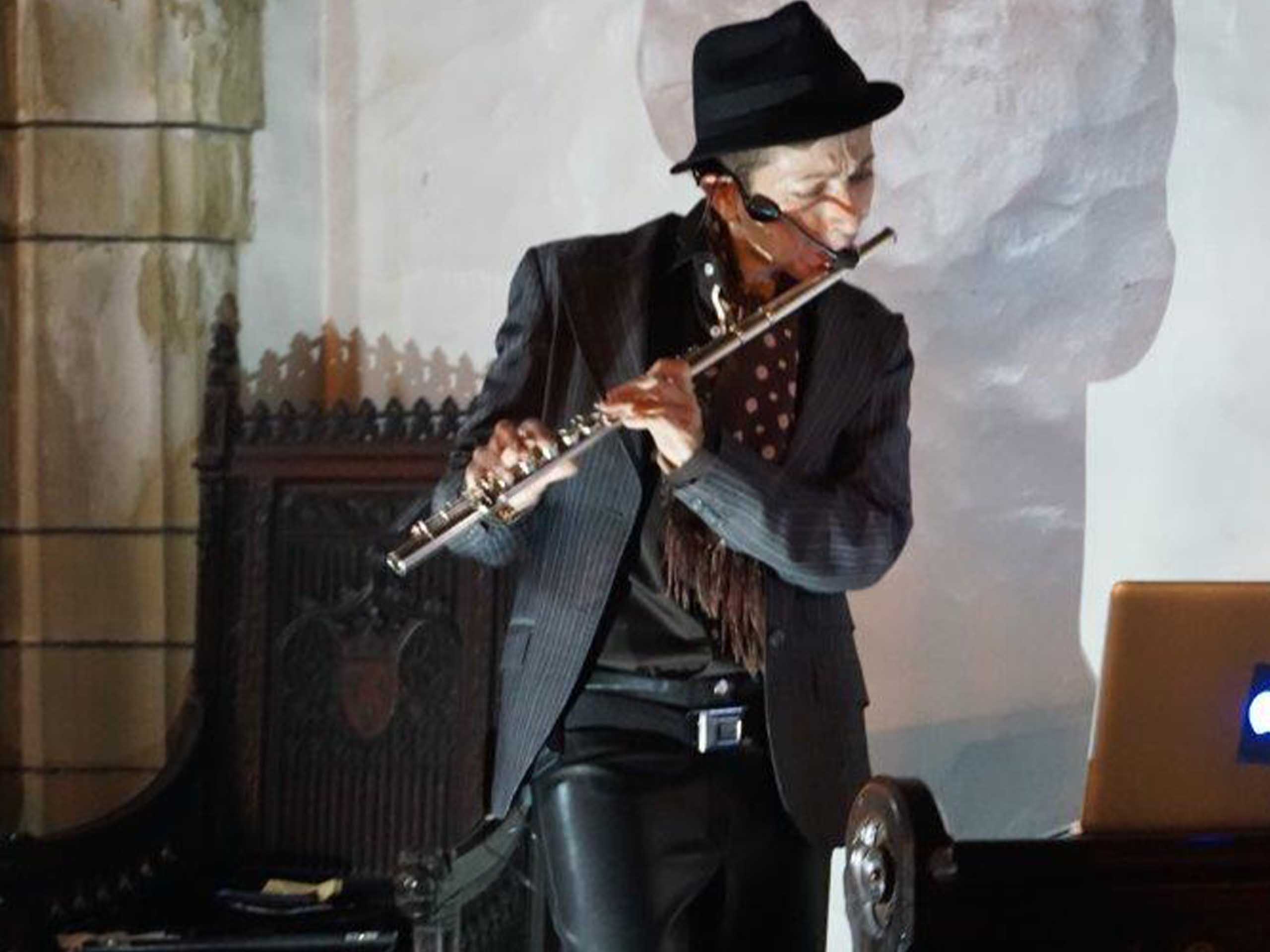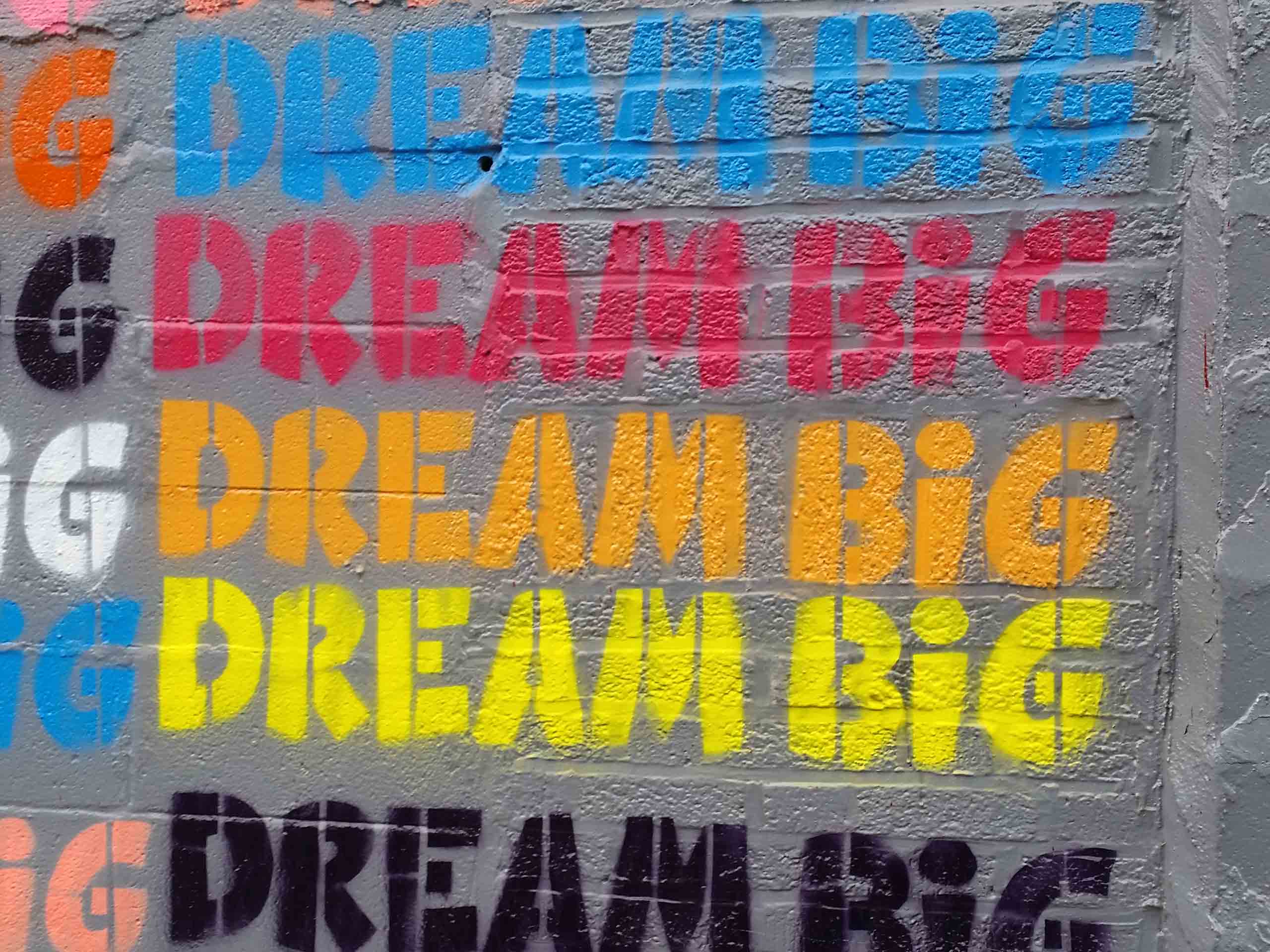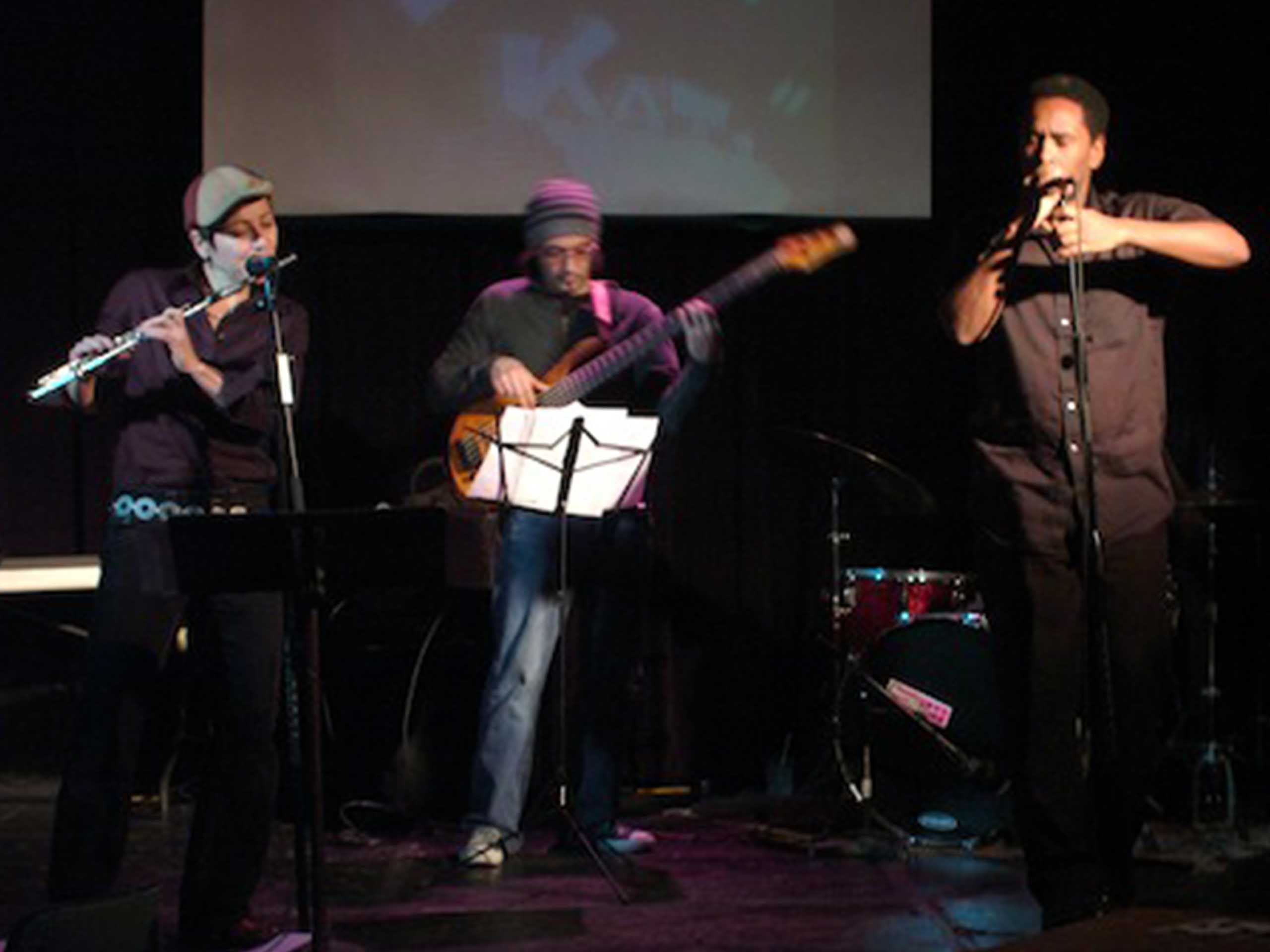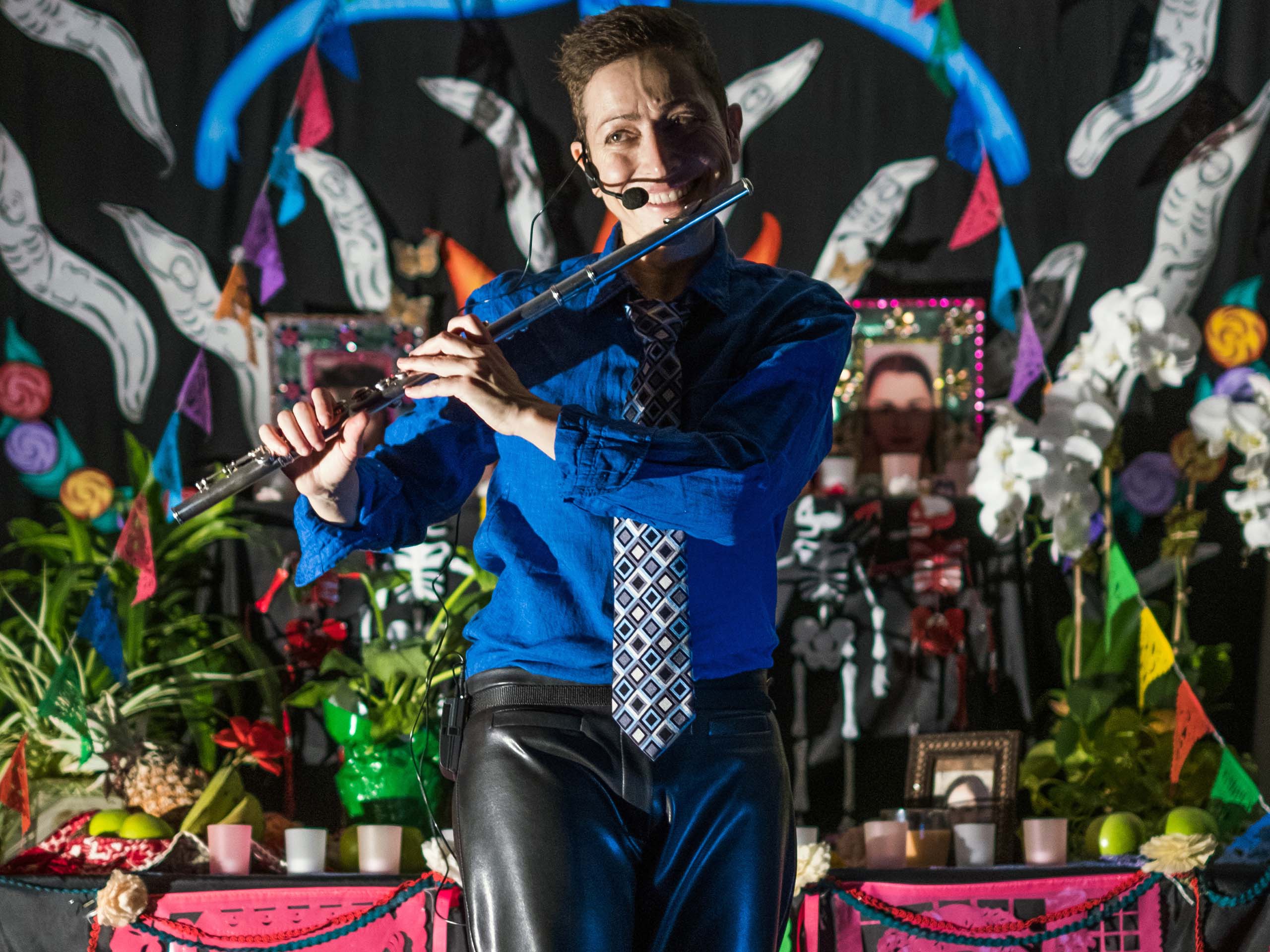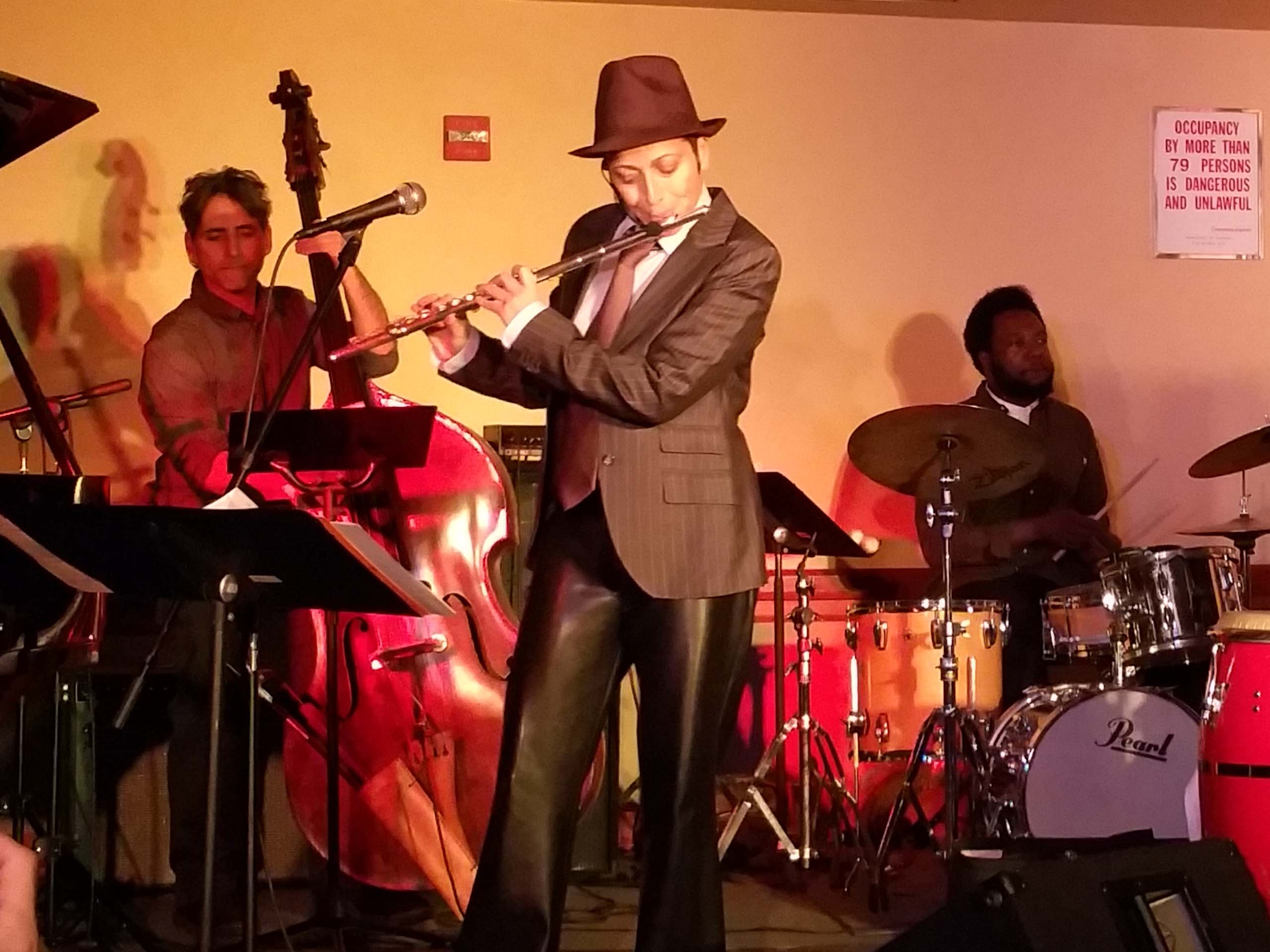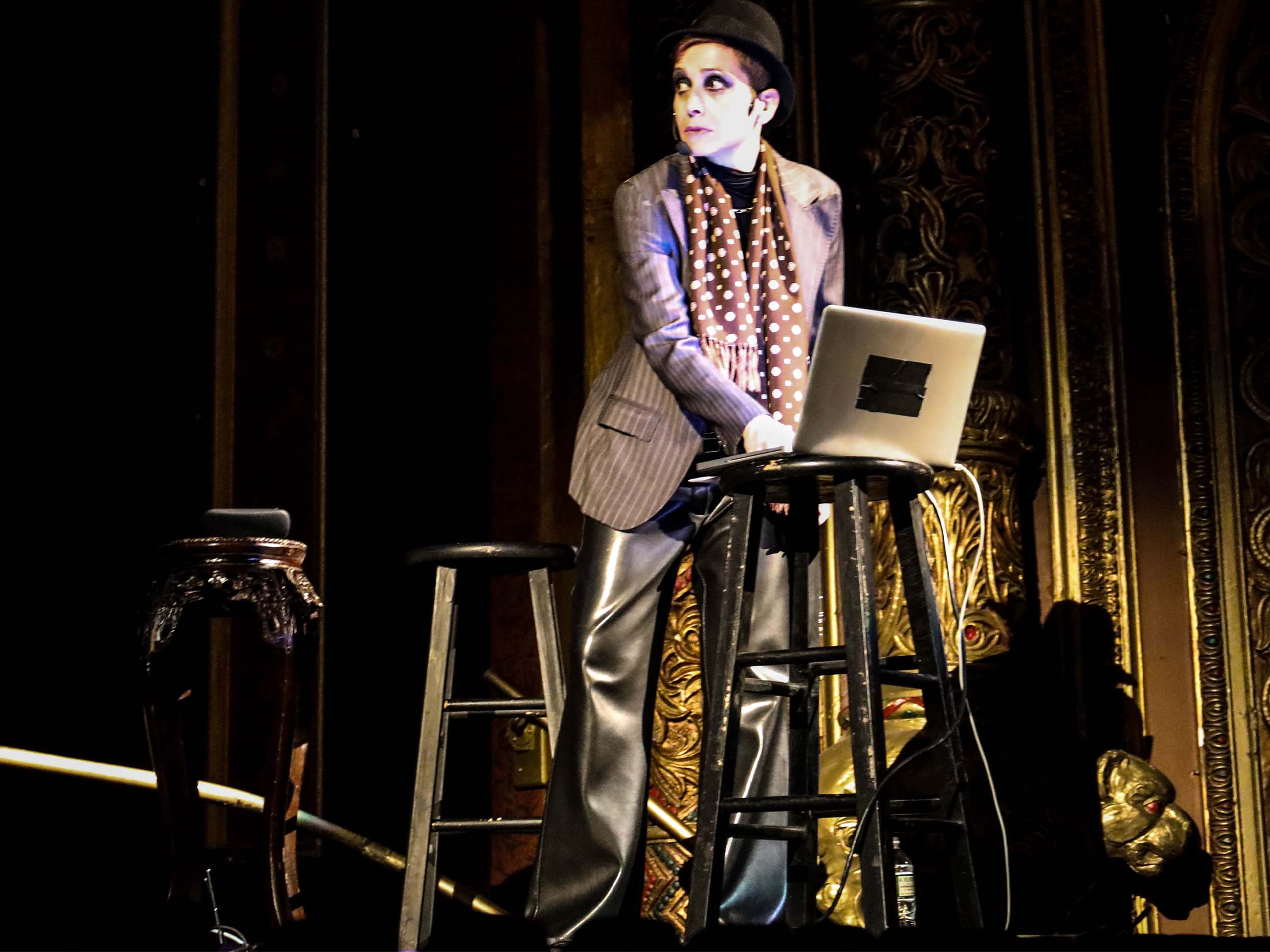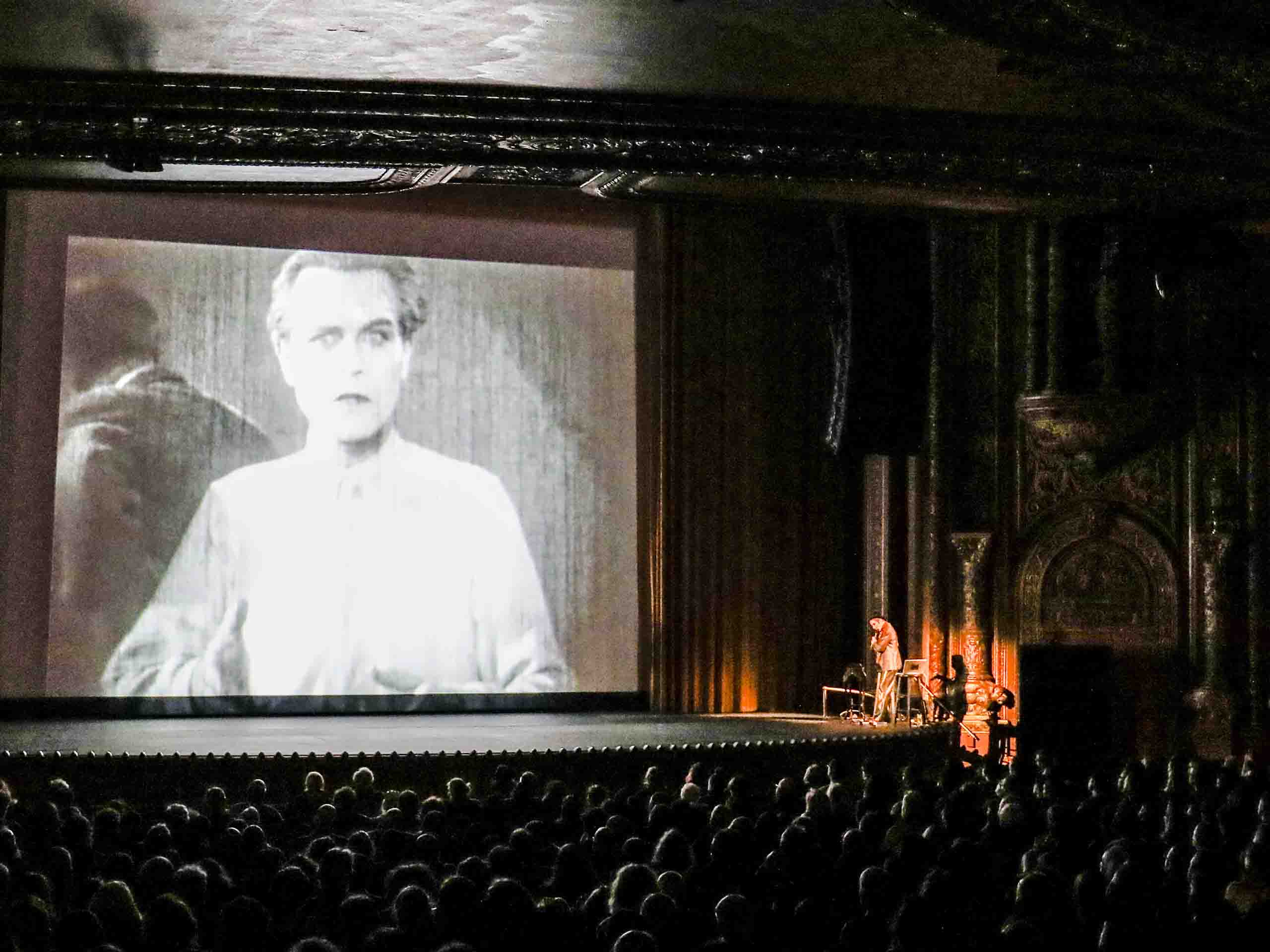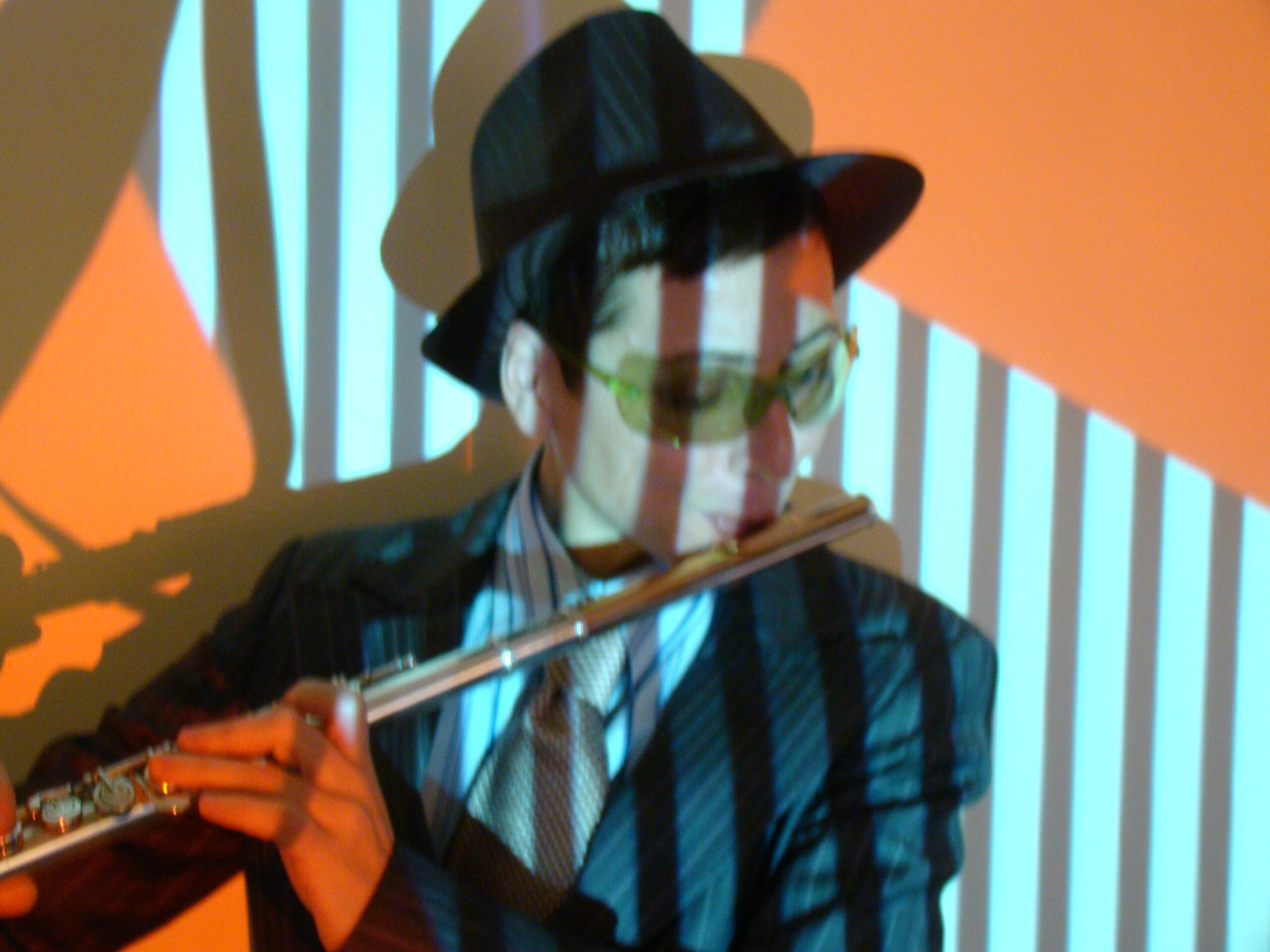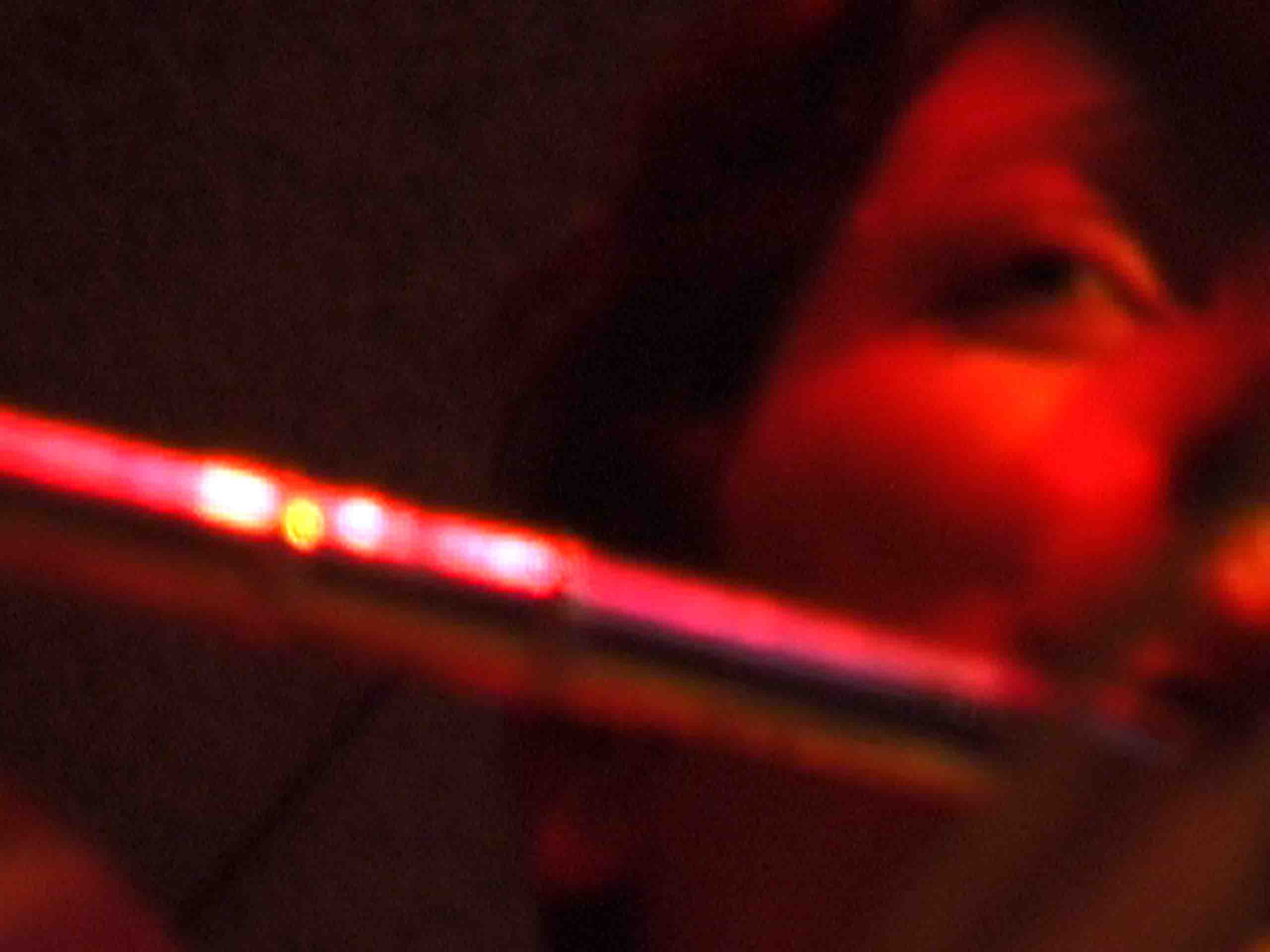Weimar Film Collage
TIME IN LIVE SOUND & SILENT MOTION PICTURE:
Weimar Film Collage
SOUND&VISUAL ENHANCING SOCIAL AWARENESS AND PIONEERING AESTHETICS:
Screening with Contemporary Live Electro-Acoustic Music
Music Composed and Performed by / Film Collage edited by Fulbright scholar composer/flutist/educator, Yael Acher “KAT” Modiano
Reviews:
– “Hypnotic Visual and Audio Event…[t]he combination of the film and Acher’s performance created a highly inspiring cinematic-musical experience. … purely modernistic in character, blasting around the film, encompassing, supporting, and enhancing it.” – by Uri Klein, Ha’aretz, Tel Aviv, (April 2018).
– “”KAT”’s music created such an ecosystem in which to fully absorb the beauty of the film.” – by poet, Kristin Prevallet, New York City (March 2018).
Time in Live Sound & Silent Motion Picture is a “real-time” response to a time -capsule of Weimar era silent cinema. As an electro-acoustic flutist / composer, Modiano transforms the tradition of live music accompaniment of silent films to a contemporary experience. Through this art-performance hybrid, Modiano merges the two eras and art mediums. While her electro-acoustic music adds a surreal element, it also enhances the films’ emotional intensity, symbolic motifs, camera action, and social messages.
Modiano’s audio vocabulary is made of a versatile palate of sounds, stemming from universal eclecticism. Among elements typical to the Western classical music of 20th and 21st Centuries, Jazz, and rhythmic popular music, the soundtracks encompass also noise-art. Raw pulsating industrial noise-beats, ambient elements from ritualistic and spiritual music of indigenous cultures: Australian Aborigines, Native Americans, monastic spiritual Tibetan Buddhist chants, Japanese Zen music, and more.
Modiano performed Time in Live Sound and Silent Motion Picture internationally with different silent films from the Weimar era at film festivals, cinemas, screening venues, and museums in New York City, Chicago, Berlin, Venice, Bern, Tel Aviv, Copenhagen, etc. Numerous grants and awards have supported the project, including: Goethe institute in Tel Aviv and in Copenhagen, NY Foundation for Contemporary Arts, Emergency Grant, and Lower Manhattan Cultural Council, and Fresh Fruit Festival, from New York City.
Modiano has created and preformed different versions of Weimar Film Collage in New York City at Church of the Intercession (December 2017) and at Socially Relevant Film Festival at Village Cinema (March 2018), at British Irish Modern Music Institute in Dublin (March 2020), and at Støberiet in Copenhagen (December 2020).
Weimar Film-Collage is non-narrative, non-linear footage, edited of repeating cinematic motifs in different speeds and durations that are extracted from 3 Weimar era silent films selected from Modiano’s soundtrack repertoire.
-Richard Oswald’s Different from the Others (Anders als die Anderen; 1919), an educational film introducing homosexual and transgender (LGBTQ) community, and its struggle to overcome social marginalization and legal prosecution.
-Metropolis (1927), Fritz Lang’s iconic futuristic and highly stylized film on class struggle, fear, and fascination of the modern (independent) women and of technology.
-Joe May’s Street film, Asphalt (1929), an urban drama about love, lust, morals, normality, and life in the Berlin underground.
Having created and performed the full-length soundtracks for each of the films listed above, Modiano’s Weimar Film-Collage highlights through collage aesthetics the different socially relevant contexts, especially issues with gender suppression, normalization, and victimization of the feminine individual.
Post- performance/screening discussion with audiences/students on:
1). Aesthetics: electro-acoustic soundtrack: synchronizing film-score, compositions’ concepts, audio sample sources, and film-score improvisation.
2). Context: the Weimar cinema’s relevance to current times through its aesthetics and social messages, the role of women and feminine men in these films, gender violence and victimization, and the importance of artistic humanitarian messages.

